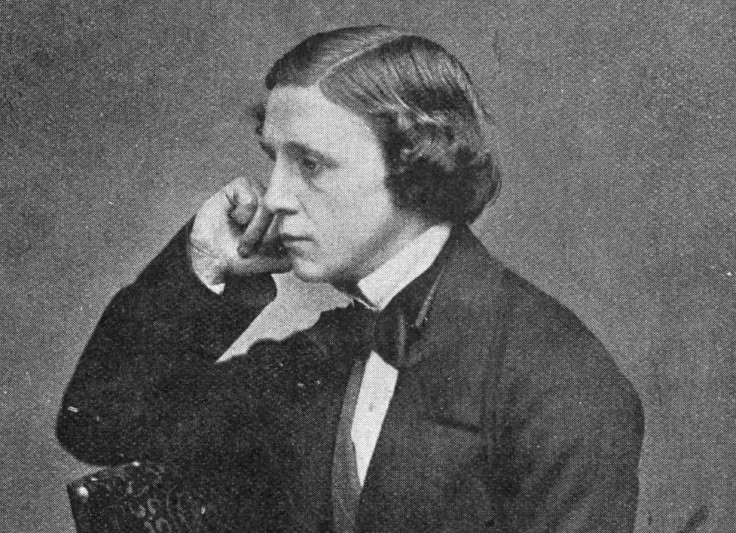Alice in Wonderland 150th anniversary: Sinister side of Lewis Carroll's relationship with Alice

Alice's Adventures in Wonderland has been an enduring classic of children's literature since it was published in 1865, remaining in print for 150 years.
The fantasy world of rabbit holes, smiling cats and logical conundrums has charmed children and adults worldwide, influencing disparate artists, such as surrealist painter Salvador Dali and filmmaker Tim Burton. But while the book is the arguably one of the world's best-loved pieces of Victorian English fiction, its author's reputation is embroiled in disrepute.
The relationship between Charles Lutwidge Dodgson, who wrote under the pseudonym Lewis Carroll, and the nature of his relationship with the 10-year-old "real Alice" – the inspiration behind the novel – has been questioned by biographers since the 1930s.
On the anniversary of the birthday of Dodgson (27 January, 1832), it has been announced that the BBC will broadcast a new documentary which will explore whether or not he was a "repressed paedophile". But where did the claims originate?
It is true that Dodgson liked little girls, or as he once wrote: "I am fond of children (except boys)". The accomplished portraitist took artistic photographs of girls, including Alice Liddell, who came to be Dodgson's muse for Alice in Wonderland and the object of his infatuation. While some have condemned the writer as a paedophile, others have argued that Dodgson's pictures were purely aesthetic – with no hidden, darker feeling.

Aesthetic mistake
Since 1999, a group of scholars, including British playwright Karoline Leach and academic Hugues Lebailly, have argued that the accusations of paedophilia are part of the "Carroll Myth" that had wildly distorted the biographical perception of the author's life and work. One of the arguments they put across is that examined without emotion, the famous legends about Carroll – including allegations of "paedophilia" – are grossly simplified or untrue.
In particular, Lebailly has argued that Dodgson's child photography is within the realms of the "Victorian Child Cult", which perceived child-nudity as essentially an expression of innocence. Lebailly has claimed that studies of child nudes were mainstream and fashionable in Dodgson's time, even appearing on Christmas cards. With this in mind, some have claimed it is wrong to view his pictures with a 21<sup>st century mindset.
Dodgson's nephew and biographer Stuart Dodgson Collingwood wrote: "And now as to the secondary causes which attracted him to children. First, I think children appealed to him because he was pre-eminently a teacher, and he saw in their unspoiled minds the best material for him to work upon."
"In later years one of his favourite recreations was to lecture at schools on logic; he used to give personal attention to each of his pupils, and one can well imagine with what eager anticipation the children would have looked forward to the visits of a schoolmaster who knew how to make even the dullest subjects interesting and amusing," Collingwood added.

Darker
There is no doubt that Dodgson's affection for what he called his "child friends" would be out of bounds today. He wrote to one 10-year-old girl: "Extra thanks and kisses for the lock of hair. I have kissed it several times – for want of having you to kiss, you know, even hair is better than nothing." It is the same quasi-romantic language that creates the Alice books.
Despite comments like Collingwood's, modern psychological interpretations of Dodgson's friendships with young girls and of his photographs – in particular, nude photographs – have led some late twentieth century biographers to speculate that he was a paedophile. Michael Bakewell, who wrote Lewis Carroll: A Biography in 1996, and Donald Thomas, author of 1995's Lewis Carroll: A Portrait with a Background, both assert that Dodgson was a paedophile, albeit a repressed, celibate one.
Others have argued that it is not that simple. Katie Roiphe, whose 2008 novel Still She Haunts Me evaluates the relationship between Dodgson and Alice Liddell, wrote in the Guardian: "When one thinks of a paedophile, one thinks of a lustful, over-the-top, drooling Nabokovian love, but that is not lewis Carroll. His love was more delicate and tortured and elusive; his warmth, his strange, terrified passion, more intricate and complicated than anything encompassed by a single word."
When some of Dodgson's photographs were exhibited in 1999, a reviewer for the New York Times quoted Vladimir Nabokov – who had translated Alice in Wonderland into Russian – as saying there was a "pathetic affinity" between Dodgson the photographer and the narrator of Nabokov's novel Lolita.
© Copyright IBTimes 2024. All rights reserved.






